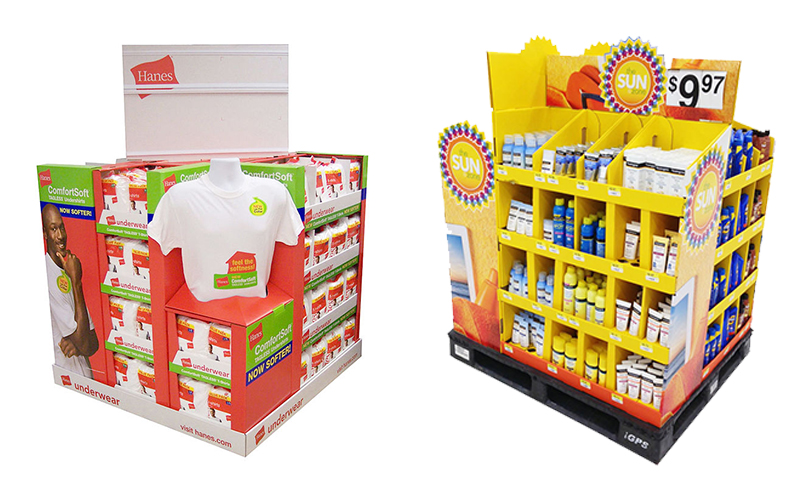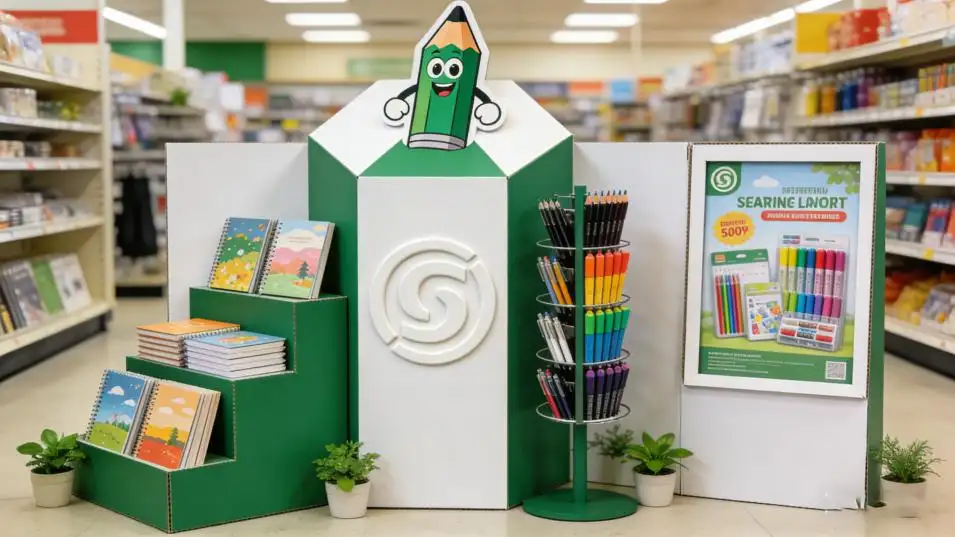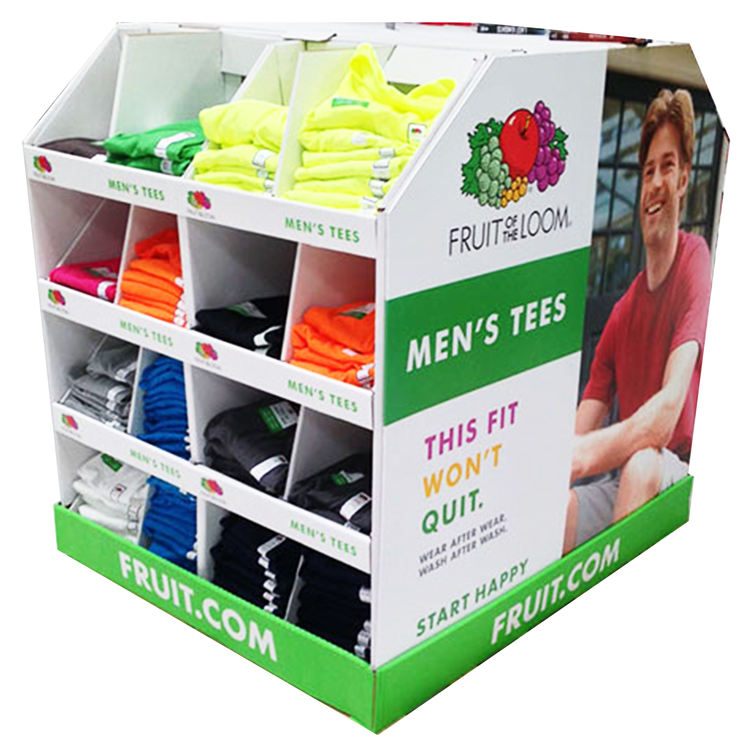Picture this: a customer is in Walmart, looking for the perfect pair of socks. They approach the sock section, only to be met with a jumble of different sizes, colors, and patterns mixed together in a single bin. Frustrated and unable to find what they need, they walk away. This is a sale you just lost, not because of your product, but because of your presentation.
For brands that sell small, multi-variant items—like socks, cosmetics, snack bars, or hardware—this scenario is a daily nightmare. So, how do you ensure your products remain neat, shoppable, and attractive in the chaotic retail environment?
The answer lies in a brilliantly simple yet highly effective tool: the Cardboard PDQ Tray with Dividers.
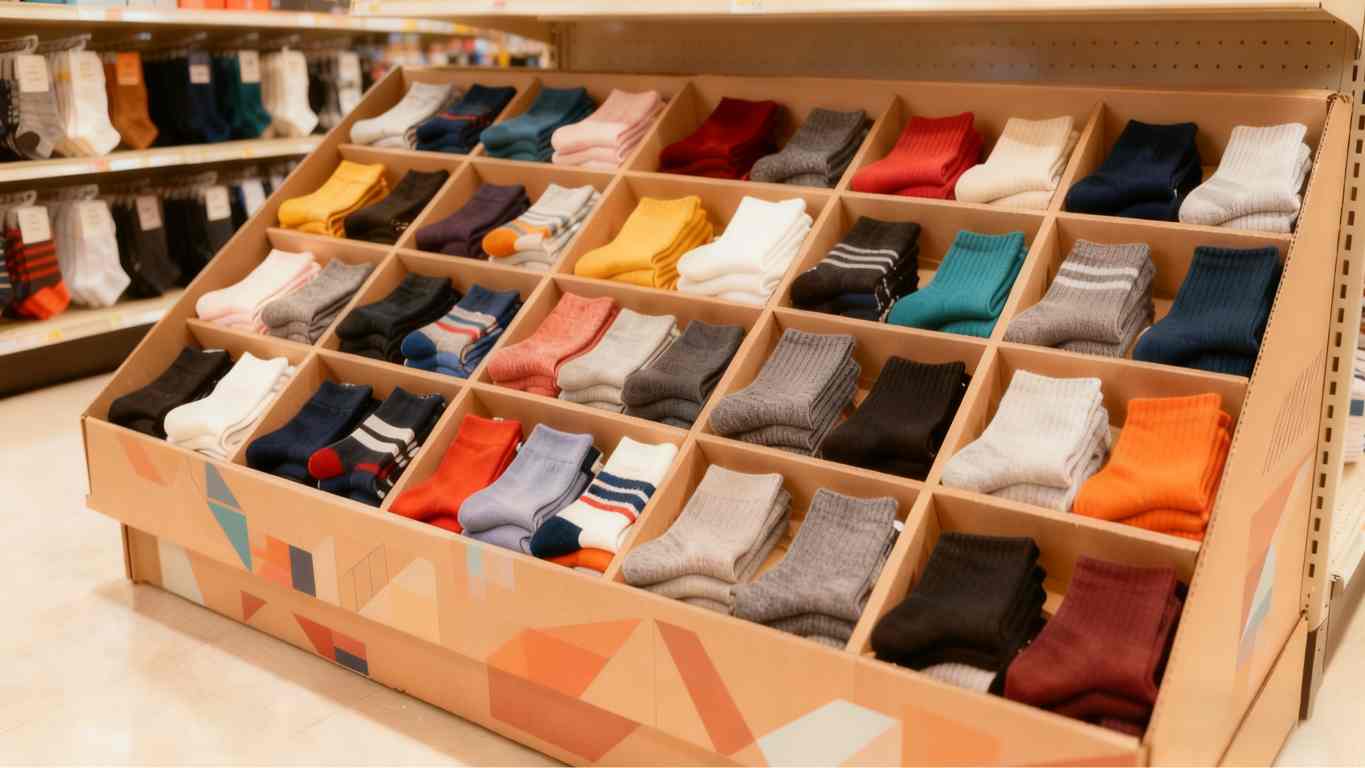
What is a PDQ Tray? The Champion of Shelf Organization
A PDQ (Pretty Darn Quick) Tray is a type of shelf-ready or countertop display designed for rapid placement and maximum impact. These trays are typically pre-filled with products and sent to retailers, who can place them directly onto a shelf or counter in seconds.
While a basic tray holds products, the real magic for small-item organization comes from a simple addition: dividers.
The Unsung Hero: Why Dividers are a Game-Changer
Dividers are the secret weapon in the fight against retail entropy. They transform a simple tray into a high-performance selling machine.
- Clarity and Organization: For products like socks, which come in multiple sizes (S, M, L), colors, and styles, dividers are essential. They create distinct compartments for each variant, allowing customers to easily find exactly what they're looking for.
- Enhanced Shoppability: A neat, organized display is inviting. It reduces customer frustration and makes the shopping experience pleasant and efficient. A happy shopper is more likely to buy.
- Maintained Brand Image: A messy, disorganized product pile looks cheap and neglected. A tidy display with clean dividers reflects a brand that is professional and cares about its customer experience.
- Inventory Management: For retailers, dividers make it instantly obvious which variants are running low, simplifying the restocking process.
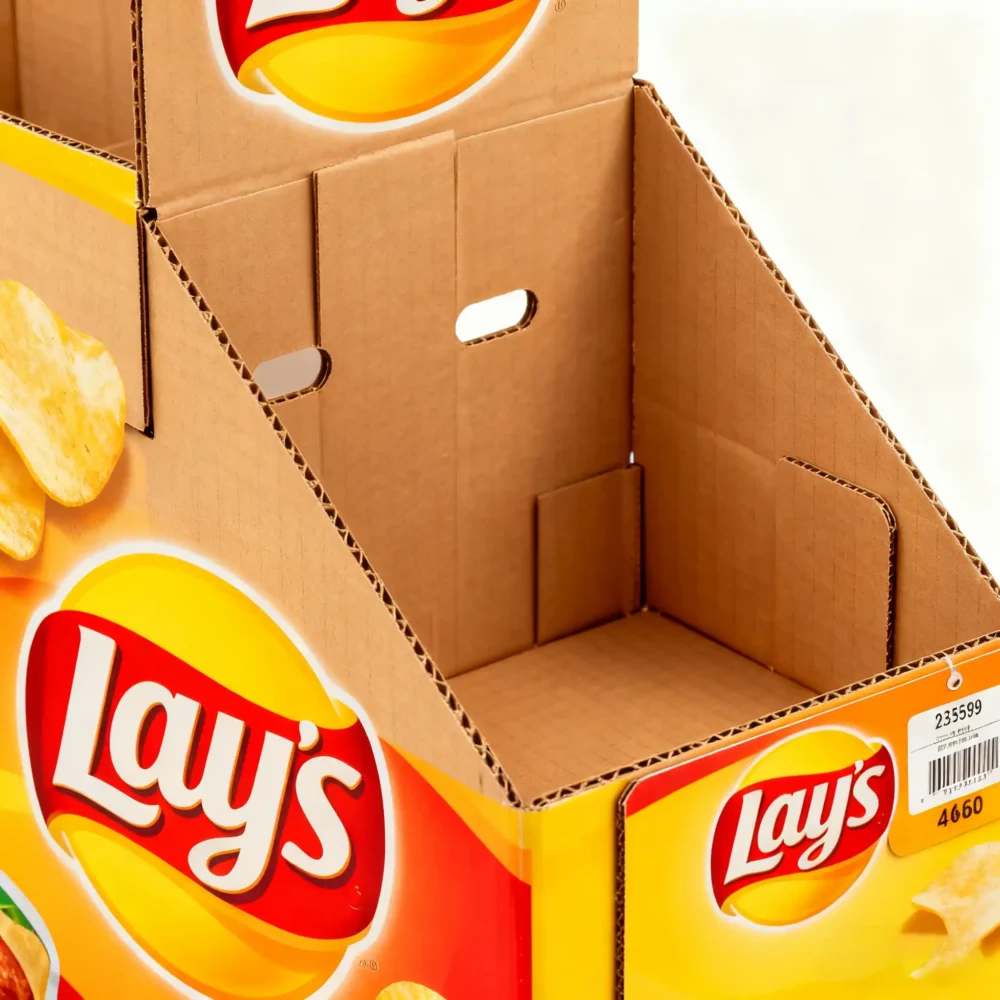
Meeting the Standards: Designing for Big Retailers like Walmart
The competitor's page mentions "Wal-mart" for a reason. Getting your product into a major retailer is a huge achievement, but it comes with strict rules. Big-box stores have precise specifications (a "style guide") for any displays on their shelves.
Your PDQ tray design must be compliant. This includes:
- Exact Dimensions: The tray must fit perfectly into the designated shelf space without overhang.
- Structural Strength: It must be engineered from high-quality corrugated cardboard to hold the full weight of your product without buckling.
- Safety Standards: No sharp edges or weak points that could create a hazard.
- Easy Identification: Clear branding and product information visible to both customers and stocking staff.
Working with an experienced display partner who understands these requirements is not just important; it's essential for success in major retail channels.

Anatomy of an Effective PDQ Tray with Dividers
Creating the perfect tray is a science. Here are the key elements:
- Strong, Eco-Friendly Material: Corrugated cardboard is the ideal choice. It's durable, lightweight for shipping, cost-effective, and 100% recyclable.
- Vibrant, On-Brand Printing: Use the front lip and back panel of the tray as a mini-billboard. High-quality CMYK printing ensures your brand colors and logo pop.
- Smart Structural Design: The tray and its dividers must be engineered as a single, robust unit. The dividers should lock into place securely to prevent collapse.
- Low Profile Front Lip: The front edge should be low enough to allow customers to see and access the products easily, while still being tall enough for prominent branding.
This level of detail is what separates a generic box from a powerful piece of custom POP (Point of Purchase) solution.
The Bottom Line: Organized Products Mean More Sales
Ultimately, a cardboard PDQ tray with dividers is an investment with a clear return. It prevents lost sales due to frustration, increases the likelihood of impulse purchases, strengthens your brand's image, and makes your product easier for retailers to manage.
It stops the shuffle, ends the mess, and puts your product in the best possible position to be chosen.
Isn't it time you took control of how your product is presented on the shelf?


